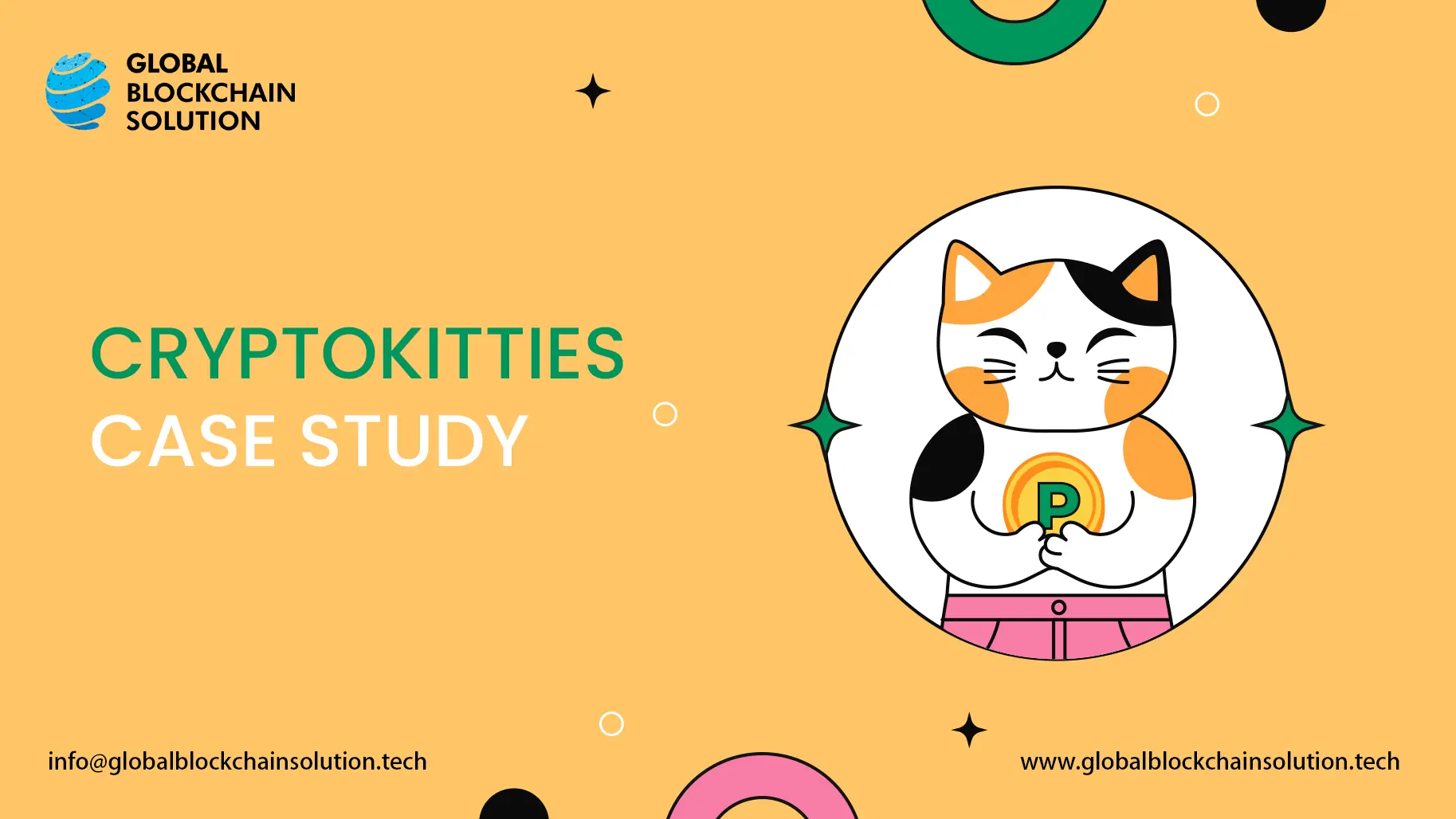CryptoKitties. Does it ring a bell? If you’re late to the NFT party, chances are it won’t.
CryptoKitties was all the rage in 2017. After its launch, the project choked the Ethereum network. People lined up to buy these kittens and spent more than $1.3 million in just a few days.
And, then, the hype just vanished! The interest peaked in December 2017 and it was never the same. By the end of 2023, there were less than 50 CryptoKitties sales per month totaling below $10,000.
Why did the project not see the light of the day?
Does its demise have anything to do with the Ethereum network congestion? Or, was it just the game mechanics that led to its ultimate decline?
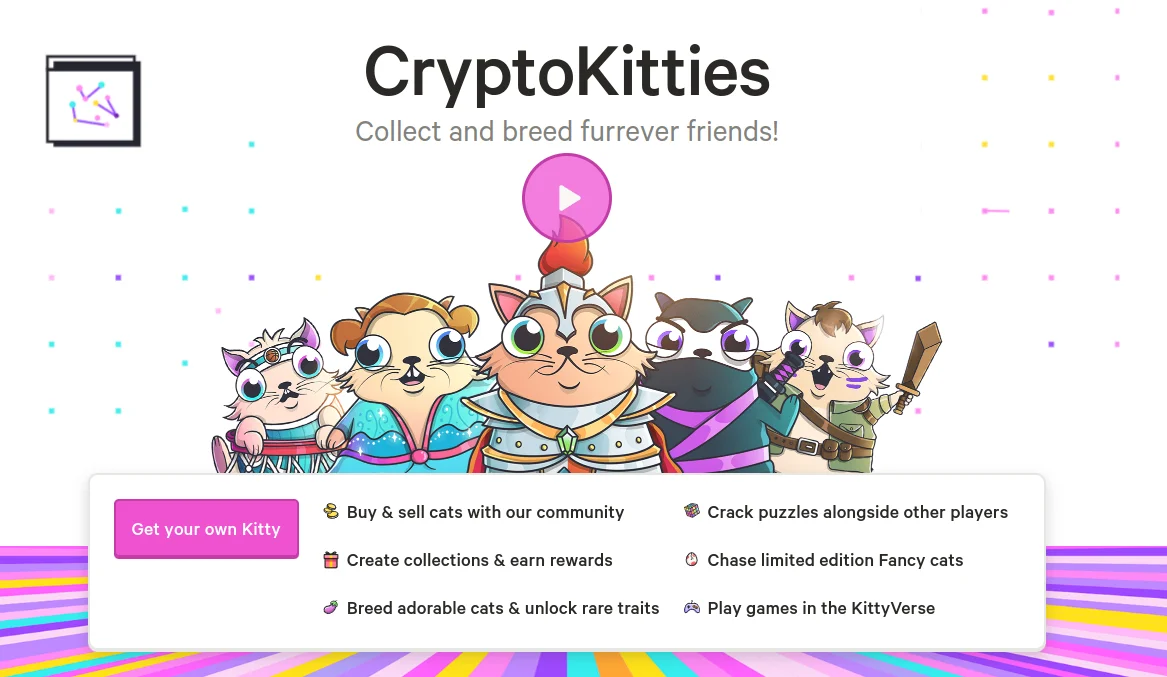
We can’t pin the blame on a single element. We will have to dive deeper into the project to hypothesize what went well and bad for the project.
At Global Blockchain Solution, we believe that if the blockchain industry is to evolve, learning from the triumphs and tribulations of others becomes imperative. After all, even for applications built on cute cats, understanding structural weaknesses is essential!
So, we will today delve into the CryptoKitties phenomenon, unraveling the enigma behind its meteoric rise and sudden decline. Let’s go!
This Article Contains:
Understanding CryptoKitties Gameplay
CryptoKitties, introduced in November 2017, was more than just a game about adopting and breeding digital cats. It was an innovative foray into using blockchain technology to create an integrated economic system within a gaming environment.
1. Acquiring CryptoKitties
The essence of the game centered around collecting and breeding unique digital cats, each termed a CryptoKitty. These were NFTs on the Ethereum blockchain, representing unique digital assets with confirmed ownership.
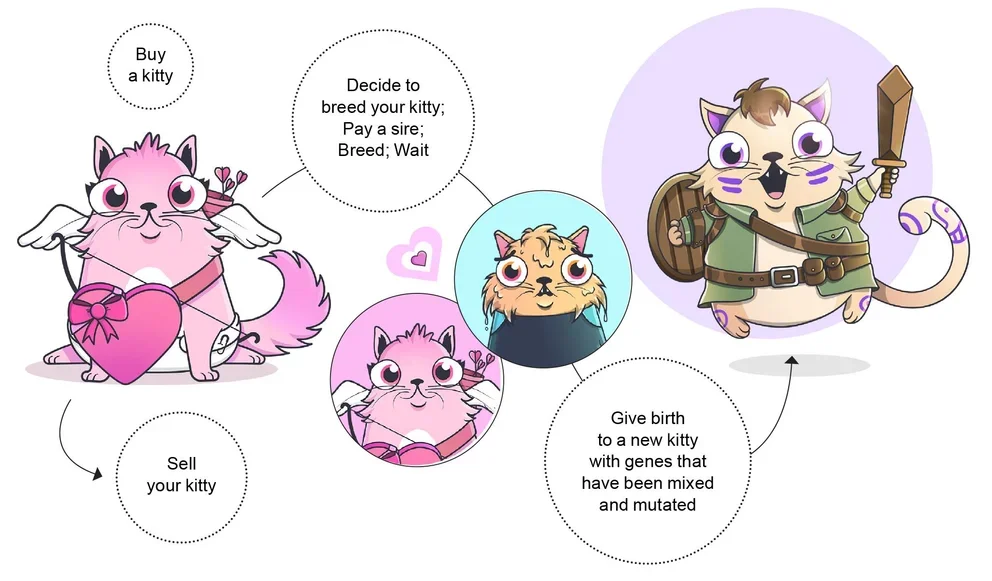
Over 2 million CryptoKitties existed by 2023, with some, like the CryptoKitty named Dragon, selling for as much as 600 ETH (over $170,000 in 2018).
2. Generations and Breeding
Each CryptoKitty belonged to a specific generation, with Gen 0 being the original cats released by the developers. Subsequent generations (Gen 1, Gen 2, etc.) were the offspring of previous generations.
The generation of a new kitten was one higher than the highest generation of its parents. For example, breeding a Gen 1 cat with a Gen 3 cat would result in a Gen 4 kitten.
Breeding was a central element of gameplay. Players would pair two of their CryptoKitties, or one of theirs with another from a different player for a fee. The breeding process took time, typically a few hours, and the resulting kitten would be a unique mix of its parents’ traits.
This breeding cooldown period increased with each subsequent breeding, making strategic planning important for players.
3. CryptoKitty Traits and Cattributes
Each CryptoKitty had a set of 'cattributes' such as fur type, eye shape, and color, which could be passed down to their offspring. Some cats are rarer based on these attributes, like the ‘Shiny' cats. Out of millions of cats, only 57 shiny cats were found till 2021.
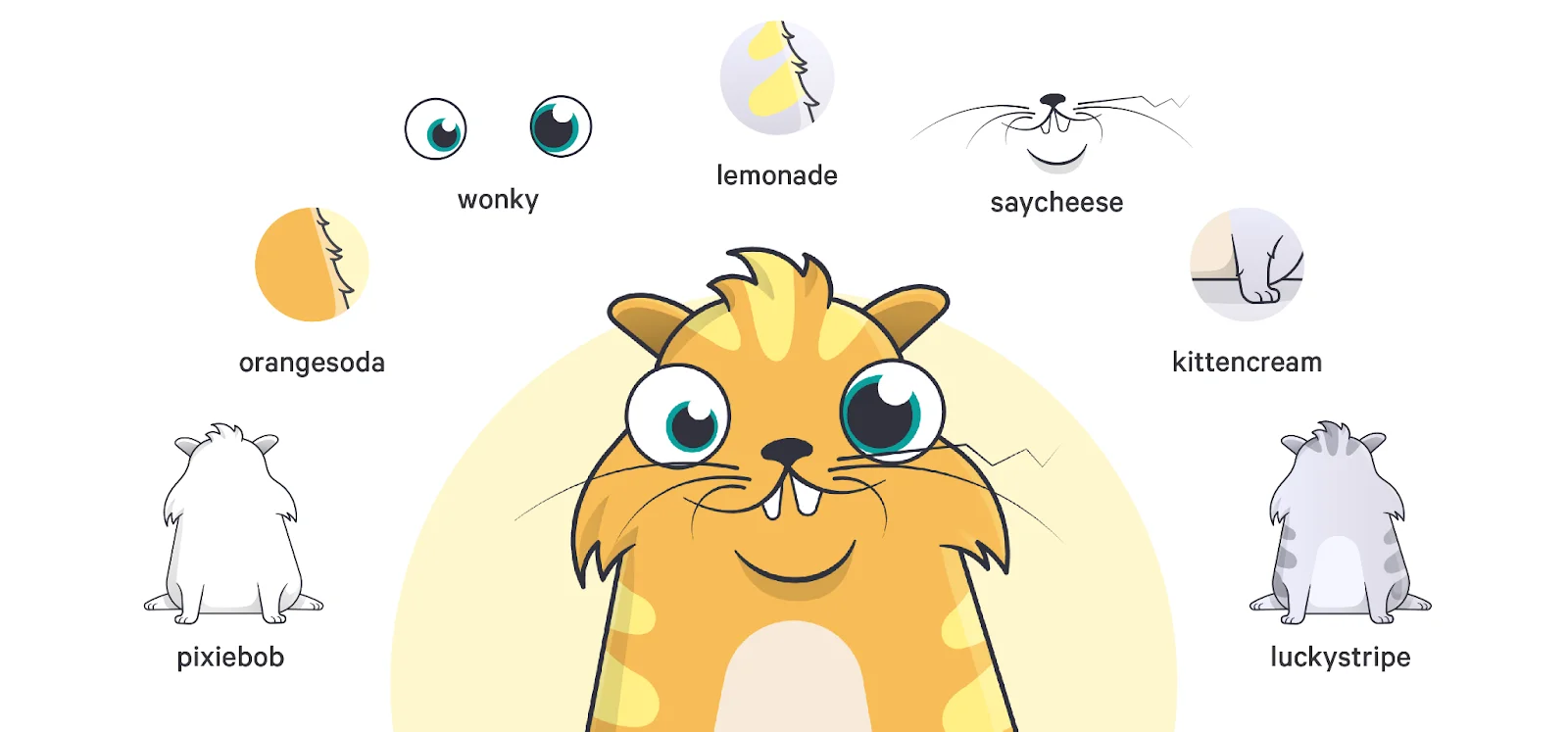
Special trait combinations could result in 'Fancy Cats,' rare and highly sought-after varieties.
4. User Experience and Marketplace
The game provided an intuitive user interface for viewing, breeding, and trading CryptoKitties. A vibrant marketplace emerged where players traded cats based on rarity, traits, and generation.
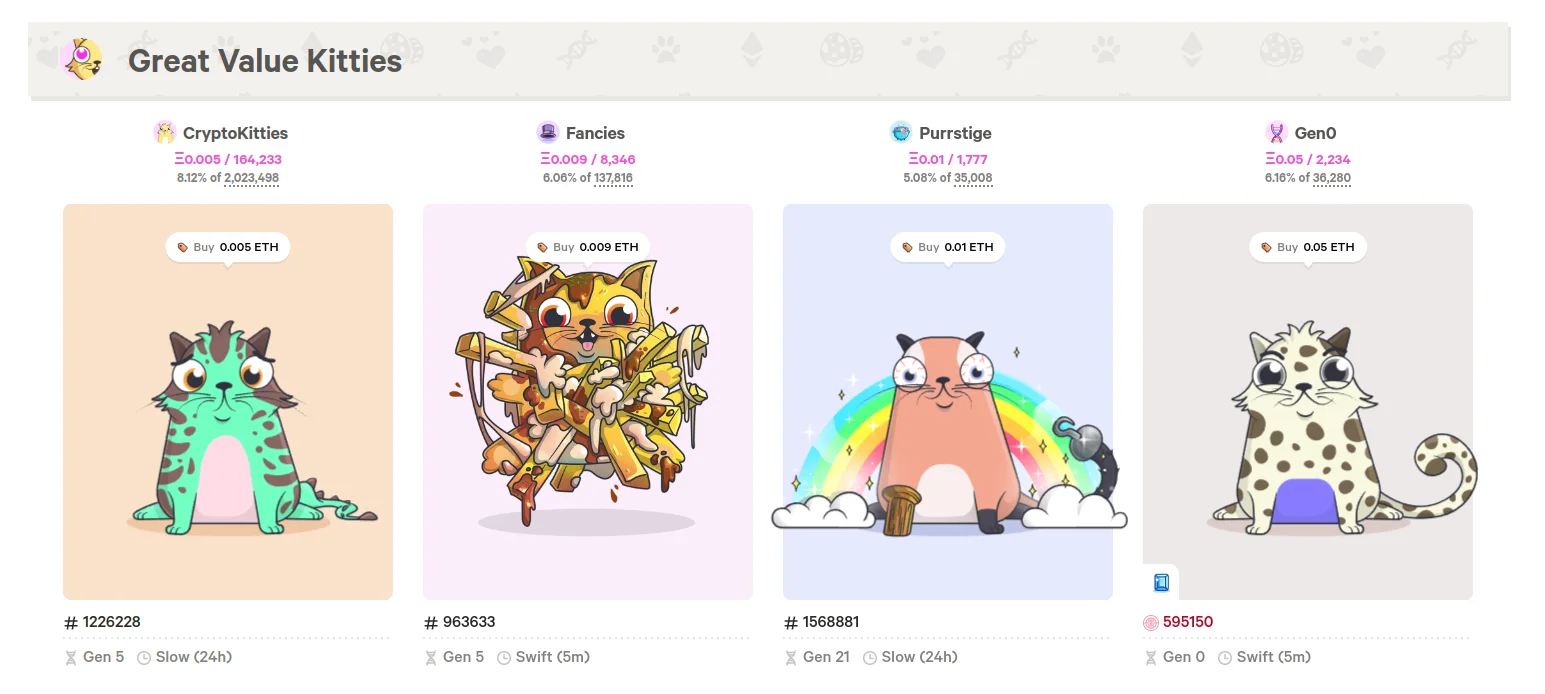
Some cats, especially those with rare attributes or from early generations, were highly valuable, selling for substantial amounts.
5. Economic and Genetic Systems
The economic system in CryptoKitties was driven by supply, demand, and the unique genetic makeup of each cat. The game's genetic algorithm allowed for over 4 billion possible genetic combinations, making the breeding process exciting and unpredictable.
Also Read: SEC vs. Ripple: What, When, & How
The inclusion of a cooldown period for breeding after each generation added a strategic layer to the gameplay.
In summary, CryptoKitties offered a complex and engaging blend of gaming, genetics, and economics through the lens of collectible digital cats. Its gameplay, which included generations of cats, intricate breeding mechanics with cooldown periods, and a dynamic marketplace, provided a rich experience that influenced many subsequent blockchain projects.
Why Were CryptoKitties Successful?
Right after the launch, CryptoKitties took the blockchain world by storm. On the surface, it was just a game centered around breeding and trading unique digital cats. But its use of novel technology along with an appealing concept catapulted the project into the limelight.

Here are some of the factors that worked in its favor.
1. Promising Innovation by Pioneering Non-Fungible Tokens (NFTs)
CryptoKitties pioneered the use of NFTs on the Ethereum blockchain. Each digital cat was an ERC-721 token - a standard for NFTs that enabled uniqueness and traceable ownership.
This allowed each CryptoKitty to be one-of-a-kind, collectively setting them apart from cryptocurrencies and other fungible assets.
For the uninitiated, a fungible asset can be replaced with another similar asset. For instance, a $100 bill. It rarely matters which $100 bill you have.
Unless it’s some kind of memorabilia, you can replace one $100 bill with another. If it’s some kind of memorabilia, like a $100 1863 Gold Certificate, it becomes non-fungible.
Achieving the non-fungibility of digital collectibles on blockchain was a remarkable feat of technology. At the same time, the scarcity also created value for what were essentially just cuddly images.
2. Tapping into the Pop Culture
From videos to memes, cats rule the internet. They’re as adorable as indifferent they appear sometimes.
Though breeding fickle felines might seem trivial in the world of finance and technology, that was the genius behind CryptoKitties. The game offered an intuitive touch point for the mainstream public.
The game was also designed as a great introduction to the world of blockchain. With no cryptocurrency or coding needed, anyone could buy, breed, or "sire" (breed with someone else’s CryptoKitty) cartoon cats. CryptoKitties became the reason many touched blockchain for the first time.
3. Pushing Ethereum to Its Limits
Before CryptoKitties, blockchain technology was synonymous with cryptocurrencies. The project changed that forever. It unveiled the capability of a decentralized ecosystem beyond payments. A part of Ethereum’s success is also attributed to CryptoKitties, thanks to the awareness it raised about the project.
Yes, it also clogged transactions and slowed everything to a crawl at the peak of CryptoKitties mania. However, this public display of Ethereum's limitations forced the community to confront long-standing scalability issues.
In other words, CryptoKitties also kickstarted a slew of innovations to build faster layer-2 solutions. So, it both strained and strengthened Ethereum for the future in one fell swoop.
4. Viral Success Created a Positive Feedback Loop
Part of CryptoKitties’ appeal was the hype itself. The game spread like wildfire, not unlike its fickle furballs breeding four new kittens every fifteen minutes at its peak.
Rare kitties were trading hands for over $100k, attracting media attention that further fueled the frenzy. Before long CryptoKitties accounted for over 20% of all Ethereum traffic. While hype eventually plateaued, CryptoKitties brought blockchain technology into the zeitgeist like never before.
CryptoKitties pioneered blockchain gaming through an ingenious combination of technological innovation and mass appeal. It introduced Non-Fungible Tokens to mainstream audiences, pushed Ethereum to new horizons, and evolved public awareness of blockchain.
The recipe behind CryptoKitties - novel technology, intuitive design, and cultural phenomenon - endures as a model for blockchain projects aiming for real-world impact today. At the heart of it all though, it begins with cats. Because cats rule everything - including blockchain.
Why CryptoKitties Failed?
Behind the veneer of cooing kittens and playful breeding was complex technology straining at the seams. It only took one week of exponential user growth for the hidden flaws in the CryptoKitties ecosystem to reveal themselves.
As we analyze why CryptoKitties failed, it becomes evident that the project was itself a victim of circumstances beyond its control. Ethereum's blockchain scalability issues determined its inevitable demise from the outset.
1. 2017’s Ethereum Network Congestion: Victim of Its Success
CryptoKitties experienced meteoric early growth, with activity multiplying six-fold in its first week. But this immediately clogged up the Ethereum blockchain it relied on, exposing critical scalability limitations. With the network overwhelmed, transaction speeds slowed to a crawl across Ethereum, hampering usability for all decentralized apps.
2. Prohibitive Costs: Surging Gas Fees
As congestion mounted, gas fees for transactions skyrocketed, sometimes exceeding $200. At times, the cost of gas was higher than the cost of the asset. These costs barred new players from joining while making ongoing gameplay prohibitively expensive for existing users.
3. Breeding Burnout: Oversupply and Fatigue
CryptoKitties' core gameplay centered around breeding new kittens. But this exponentially increased the cat supply, diluting the scarcity that gave them inherent value. With 41,000+ kittens available in a week from its launch, the NFT uniqueness that attracted early adopters disappeared.
4. Speculation Stampede: Unsustainable Economic Model
Much of the early CryptoKitty frenzy was driven by speculative hype and dreams of high-profit resales. But as profits dwindled post-launch, most speculators fled. What was left was a technically complex game with little depth beyond kitty collection.
The economic model that fueled early trading mania was destined for collapse. As speculation peaked, purchase costs exceeded resale earnings potential for newer players. Demand depended on faith that someone else would pay more than you did - a greater fool model unsustainable in the long run.
5. The Burden of Blockchain Complexity
CryptoKitties' onboarding burdened users with educating themselves on blockchain wallets, gas fees, cryptographic keys, and other concepts peripheral to the game itself. This added a steep learning curve that filtered out casual gamers despite CryptoKitties’ lighthearted veneer.
6. Eroding Trust: System Failures
Several system outages and bugs additionally damaged trust in CryptoKitties' infrastructure. These technical issues highlighted that blockchain remains an emerging space - and reliability issues can still undermine wider public confidence.
7. Short Attention Span
As the game lost interest, its developer, Dapper Labs, also moved away and started focusing more on sports-related NFTs. While it’s good to pivot as needed, CrytoKitties, being the first blockchain-based game, shouldn’t have been abandoned like it was.
Innovative improvements to its gameplay coupled with the right marketing would’ve created a superior sentimental value for blockchain enthusiasts, thereby regaining the transaction momentum.
Key Takeaways from the CryptoKitties Story
At its peak, CryptoKitties gave the world a glimpse into the possibilities of blockchain technology beyond finance. But its decline also revealed vulnerabilities in scaling decentralized apps for mainstream use.
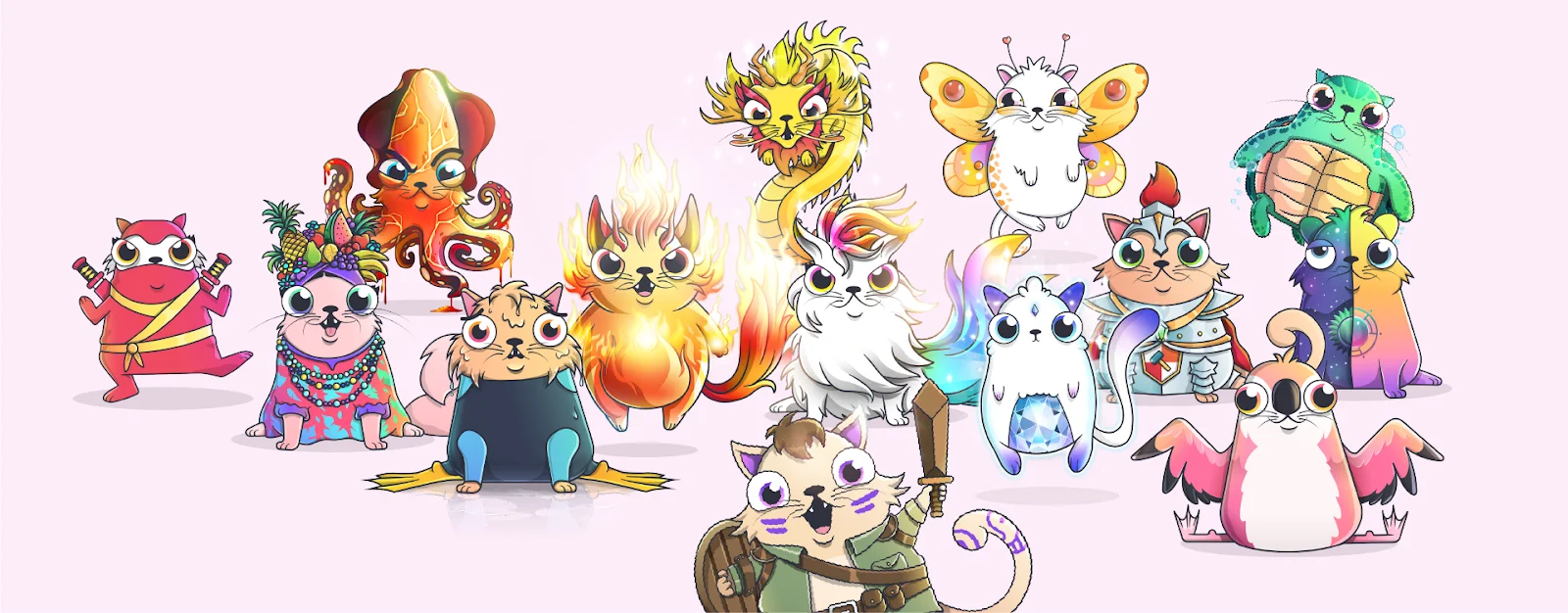
So what overarching lessons can builders take away?
1. Innovate with User-Friendly Applications
CryptoKitties demonstrated blockchain's potential beyond finance through an accessible game. Businesses can innovate by creating intuitive applications that introduce blockchain to mainstream audiences. Simplifying complex technology can aid mass adoption.
2. Understand and Mitigate Scalability Issues
By congesting Ethereum, CryptoKitties highlighted the significance of scalability. Businesses should proactively plan for scaling, as blockchain technology remains in flux. Investing in layer-2 solutions or alternative blockchains could prove pivotal.
3. Balance Supply and Demand Dynamics
CryptoKitties grappled with NFT oversupply and diminished value over time. Carefully designing tokenomics to balance supply and demand is critical for businesses. This helps maintain asset value and user incentives.
4. Beware of Speculation-Driven Momentum
The initial frenzy around CryptoKitties was partly speculative. But relying on speculation for growth is risky. Focusing on fundamental utility and sustainability matters more for user retention.
5. Prioritize Accessibility and Usability
Despite blockchain complexities, CryptoKitties kept its user experience intuitive. Similarly, businesses should craft accessible applications - reducing friction, especially for non-technical users.
6. Prepare for Economic Volatility
The crypto market volatility also impacted CryptoKitties’ economics over time. Businesses should design economic models resilient to industry fluctuations from the get go.
7. Educate Users and Build Trust
CryptoKitties highlighted the need to educate users about blockchain's nuts and bolts. Investing in guides and resources builds more informed user bases and trust.
8. Tap Cultural Phenomena for Traction
Leveraging Internet cat culture fueled CryptoKitties' viral ascent. Similarly, businesses should evaluate integrating cultural trends users identify with easily.
9. Focus on Long-term Value Creation
CryptoKitties decline stresses avoiding short-term gains over enduring value. Building sustainable utility from the ground up matters most.
10. Learn and Quickly Adapt
Finally, CryptoKitties offers both insights and cautionary tales. Continuously learning, iterating, and pivoting accordingly is vital in the ever-changing blockchain landscape. It’s good to not stick to a single thing. However, you should be willing to continuously improve your project as needed.
Conclusion
As blockchain technology continues maturing, lessons from pioneers like CryptoKitties prove invaluable for new entrants. Between balancing scalability, usability and sustainable economics, innovating requires foresight.
At Global Blockchain Solution, our years of building real-world decentralized applications equip us with specialized insights. Having navigated complexities end-to-end, we provide actionable guidance on launching successfully.
Are you looking to develop a blockchain-based product or service? Get in touch to understand how our experts can guide your ambitions aptly. Book a free 15-minute consultation with us to discuss your ideas and needs. With pragmatic support, turn bold visions into market-ready realities.
When venturing into emerging spaces rife with intricacies, seasoned partners pave the way forward. Let's explore how our experience can inform your growth, today and in Web 3.0 horizons ahead!
Frequently Asked Questions
1. What was CryptoKitties?
CryptoKitties was one of the first blockchain-based games - released in 2017. It allowed users to adopt, collect, breed, and trade unique digital cats represented as NFTs (non-fungible tokens) on the Ethereum blockchain.
2. How popular did CryptoKitties become?
Soon after launch, CryptoKitties accounted for over 20% of activity on the Ethereum network. Some rare CryptoKitties sold for over $100,000 at the peak of its popularity. Overall, people spent more than $1.3 million on the game in just a few days in late 2017.
3. What factors led to CryptoKitties’ decline?
Key factors included blockchain scalability limits, exponentially high gas fees for transactions, oversupply of digital cats diluting their value, unsustainable speculation-driven economics, lack of long-term gameplay incentives, and suboptimal user experience.
4. What key lessons can blockchain businesses learn from CryptoKitties?
Lessons include the need to prepare for economic volatility, invest in scalability solutions upfront, balance token supplies with demand, focus on long-term utility over speculation, simplify user experiences for mainstream audiences, and educate users on blockchain technology.
5. How can CryptoKitties influence future blockchain gaming projects?
By inspiring more user-friendly game design leveraging blockchain, showing the possibilities of digital asset ownership models, and highlighting the significance of deeper gameplay experiences beyond just crypto transactions for sustainability.
6. Could CryptoKitties make a comeback?
In theory, yes - if CryptoKitties builds on its initial model to address issues like scalability, creates balanced tokenomics, and focuses more on accessible experiences with engaging gameplay and long-term incentives. But a revival seems challenging given the loss of hype.
7. Does Global Blockchain Solution build blockchain games?
Yes, our experts can provide end-to-end support - from strategizing to designing, developing, and launching blockchain-based games leveraging our past learnings to maximize chances of success. Get in touch to explore your ideas!

